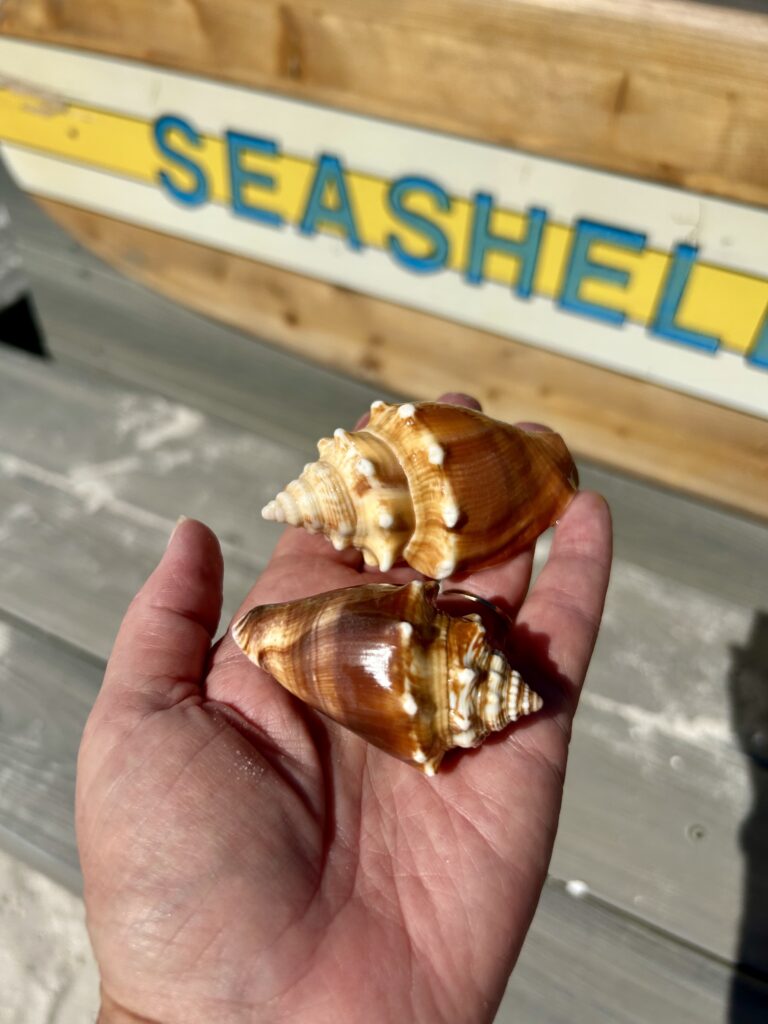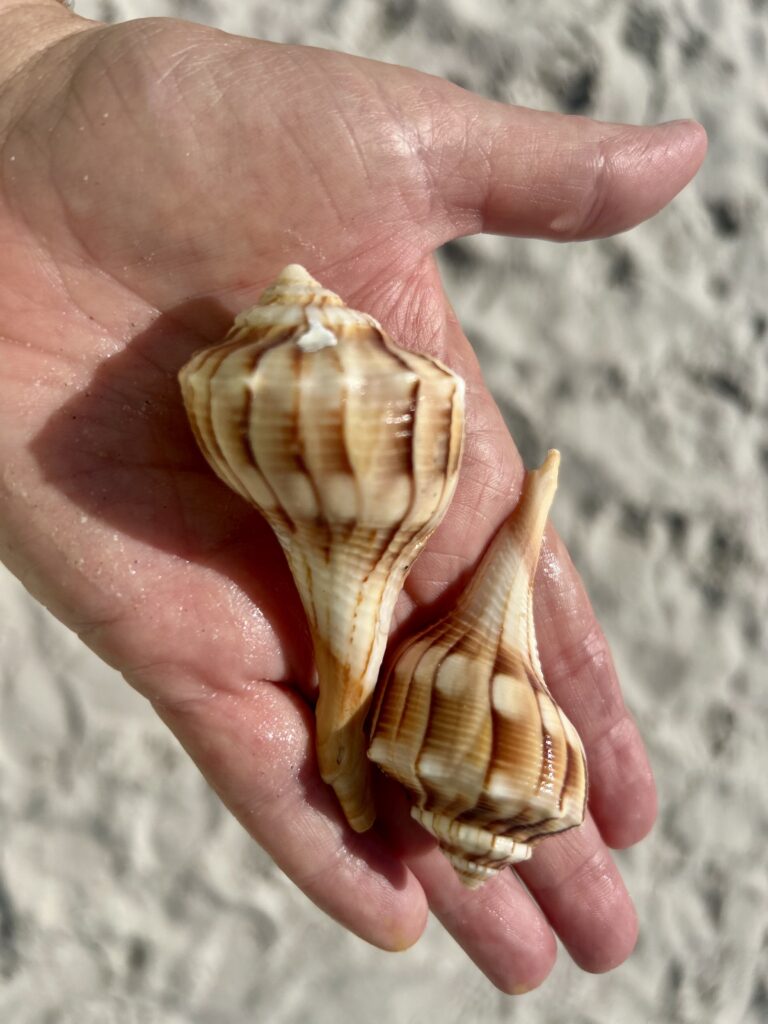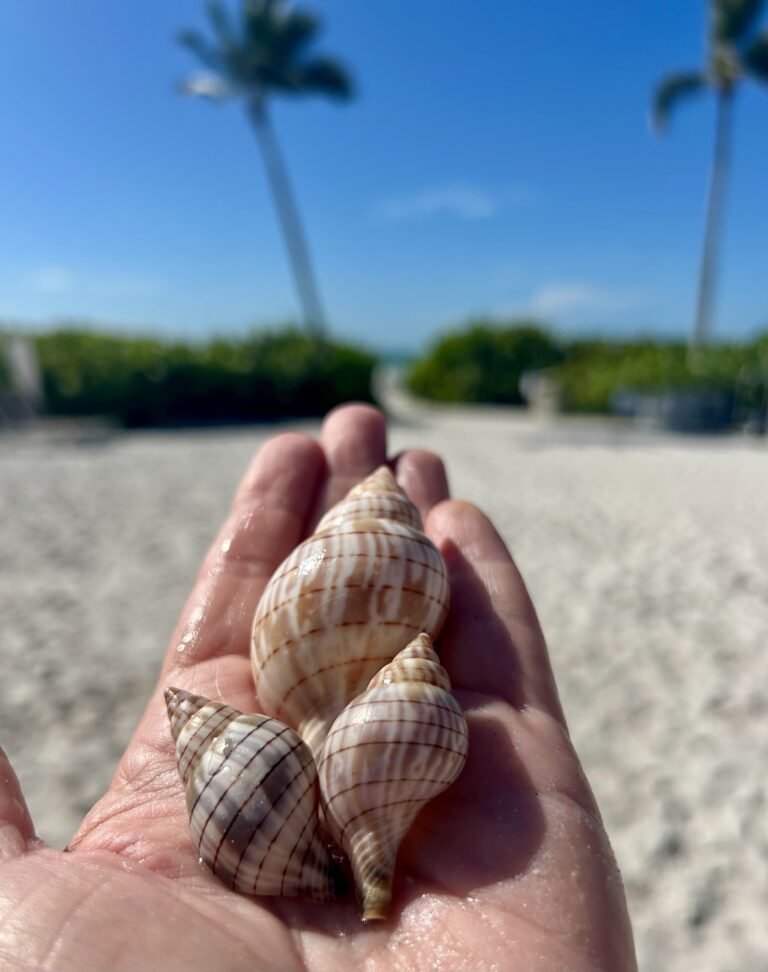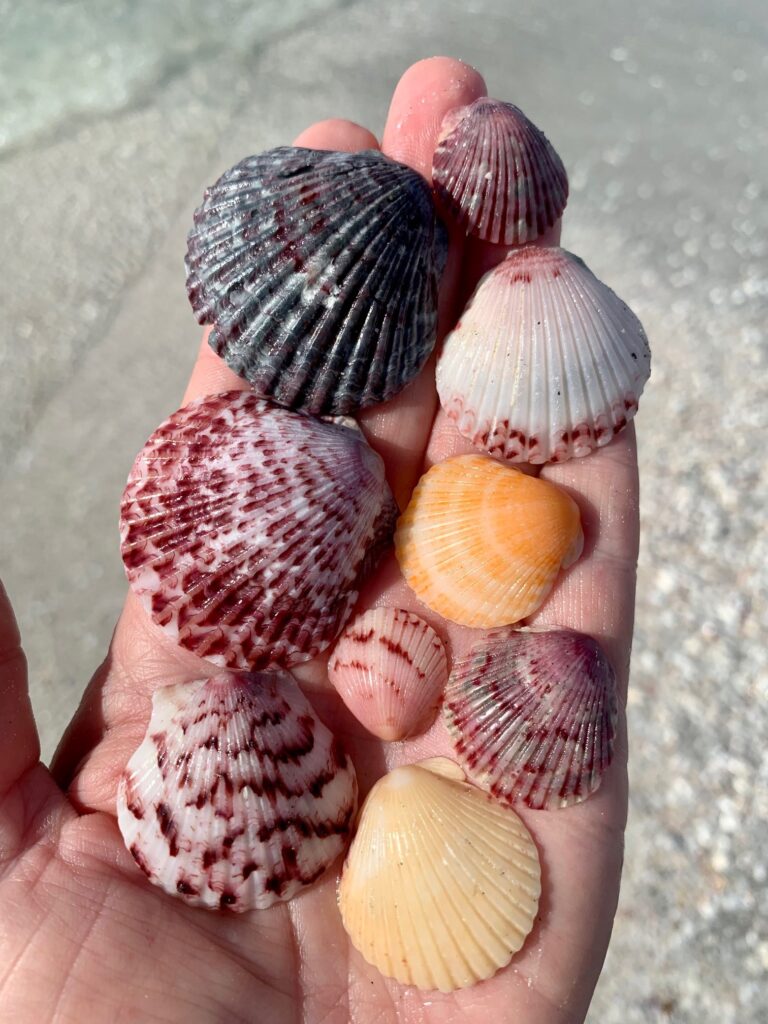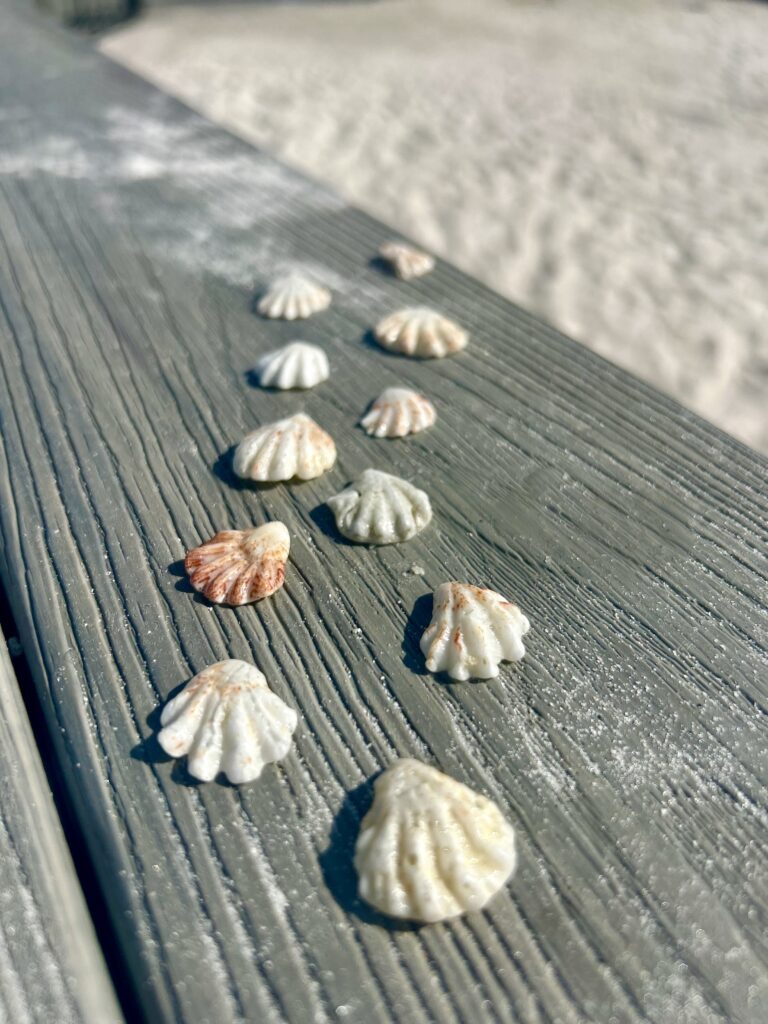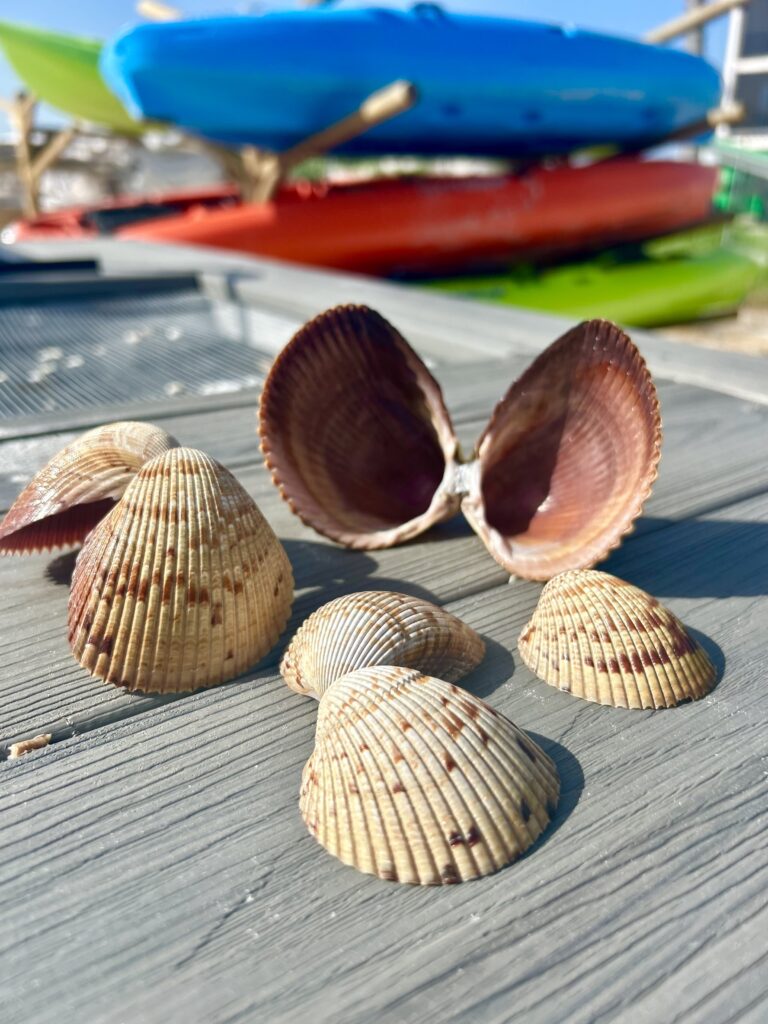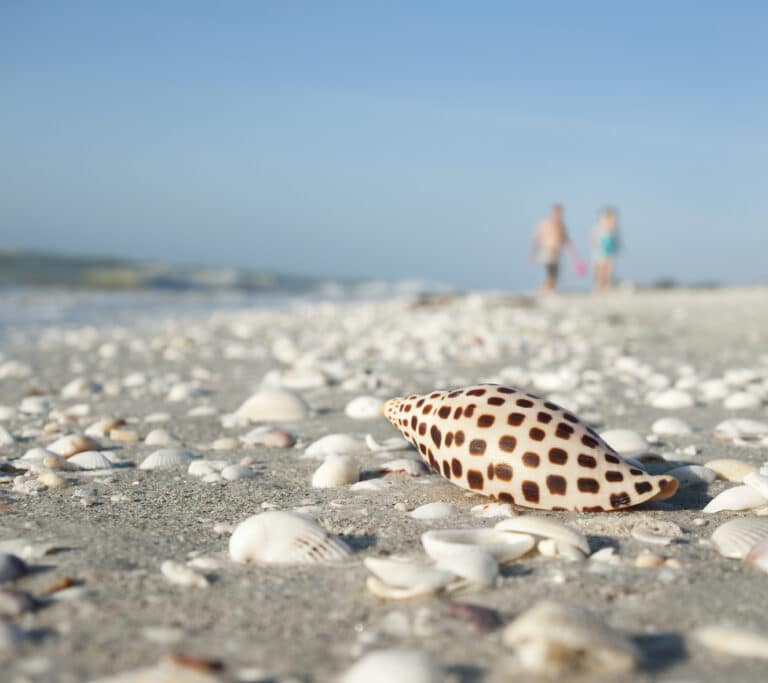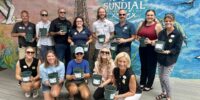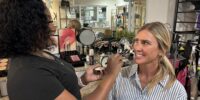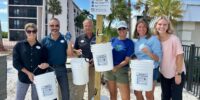Find That Shell
You know the Sanibel 7 but now it’s time for the Sundial 6!
The Sundial 6 is our list of shell finds that bring together the coveted and the findable. We think it’s realistic that a sheller could capture all 6 in a single visit and we want to challenge you to do just that! If you can find all 6 shells listed below, and share your finds with the Rec Team or your shell guide, you can earn a special treat! Prizes include your choice of a stuffed animal, an ice cream voucher from Beach Bites, or a drink coupon (21+ only.
Without further ado, meet our Sundial 6:
Florida Fighting Conch
Spot It – It’s a stout, heavy, spiraled shell, typically ranging from 2 to 4 inches. Colors vary widely, from shades of brown, tan, and cream to purplish-pink.
Know It – They use their muscular foot and operculum (a hard “trap door” on their foot) to “leap” or “vault” away in a jerky motion, which looks like a little fighting move and is how they got their name! Plus, they’re herbivores!
Find It – These are very common on the main Gulf-side beaches and can most often be found during low tide and at the low tide line.
Lightning Whelk
Spot It – The Lightning Whelk is a large, sturdy, spiraled shell that can grow up to 16 inches long, though most found are smaller. Colors range from grayish-white to tan, often with distinctive brown or purplish “lightning bolt” stripes running vertically along the shell.
Know It – It is one of the few sinistral, or left-handed, gastropod shells in the world. Most shells actually open to the right!
Find It – Smaller specimens can often be found on all of the Gulf-side beaches. However, after a big storm, you’ll have more luck finding the larger, heavier examples that have been pulled up by the surf.
Banded Tulip
Spot It – The Banded Tulip is a beautiful, smooth, spindle-shaped shell with distinct, usually purplish-brown or reddish-brown spiral bands on a cream or whitish background. They typically range from 2 to 4 inches.
Know It – Their name may be cute but these shells are predatory and feed on other marine snails and bivalves.
Find It – Find these tulips on all Gulf-side beaches, especially at low tide in the wet sand or shallow waters.
Scallops
Spot It – They are easily recognized by their ribbed, fan-like shape, often with “ears” (projections) near the hinge. Included in the scallop family is the Lion’s Paw, the most coveted of the scallop species. Various smaller, more common varieties that come in a rainbow of colors like pink, yellow, orange, purple, and white.
Know It – Scallops are unique in their ability to “swim.” They rapidly open and close their shells to squirt water, propelling themselves short distances to escape predators.
Find It – Once you know how to spot them, you’ll find scallops all over Sanibel beaches!
Kitten’s Paw
Spot It – It’s often no more than 1 to 1.5 inches across, with a wavy or scalloped edge and prominent, irregular ribs radiating from the hinge. The shell is typically white, cream, or off-white, and its bumpy texture resembles a miniature paw pad.
Know It – They are filter feeders that live in shallow marine waters, often attaching themselves to other shells or hard surfaces using thin threads, which helps them survive stronger currents.
Find It – These shells are commonly found on all Sanibel beaches but are most easily found by sifting through piles of small shells in the high tide line after a high tide.
Cockle
Spot It – Cockles are bivalve shells (two halves hinged together) that are broadly heart-shaped or round when viewed from the side, and often have prominent, radiating ribs. Colors vary, but they are often white, cream, tan, or grayish, sometimes with faint banding. Sizes generally range from 1 to 3 inches.
Know It – Cockles are often referred to as “true hearts” when both halves are found perfectly hinged together, due to their distinct heart shape. They are incredibly strong burrowers, using their muscular foot to quickly dig into the sand or mud to escape predators.
Find It – These shells are commonly found on all Sanibel beaches but the best specimens, and often intact pairs, can most frequently be found in the high tide line after a high tide.
Bonus Points
Find this next shell and you’ll automatically win and likely get your picture in the local paper!
Junonia
Spot It – The most coveted shell on Sanibel Island. It’s a medium to large gastropod shell, typically 2 to 6 inches long, characterized by its smooth, glossy, creamy-white or ivory background adorned with distinctive, evenly spaced rows of large, square-ish brown or yellowish-brown spots.
Know It – Junonias live in deep water (60-120 feet or more) off the coast, which is why finding a complete, intact specimen on the beach is so rare and celebrated.
Find It – Your best chances to find this highly desired shell will be after a strong tide, during exceptionally low tides, and early in the morning (before other shellers have had a chance to stoop and scoop you!).


